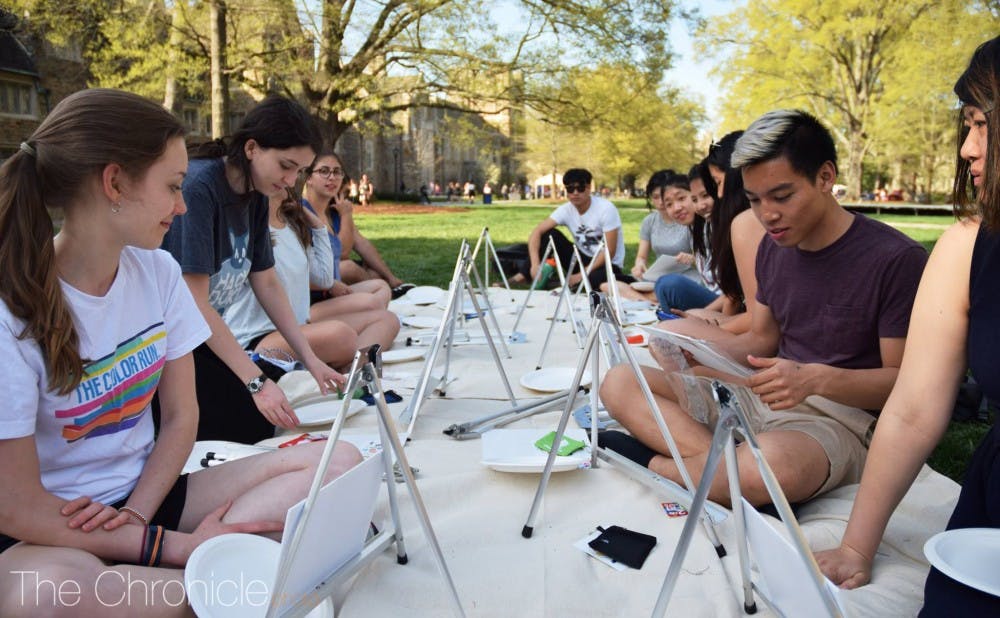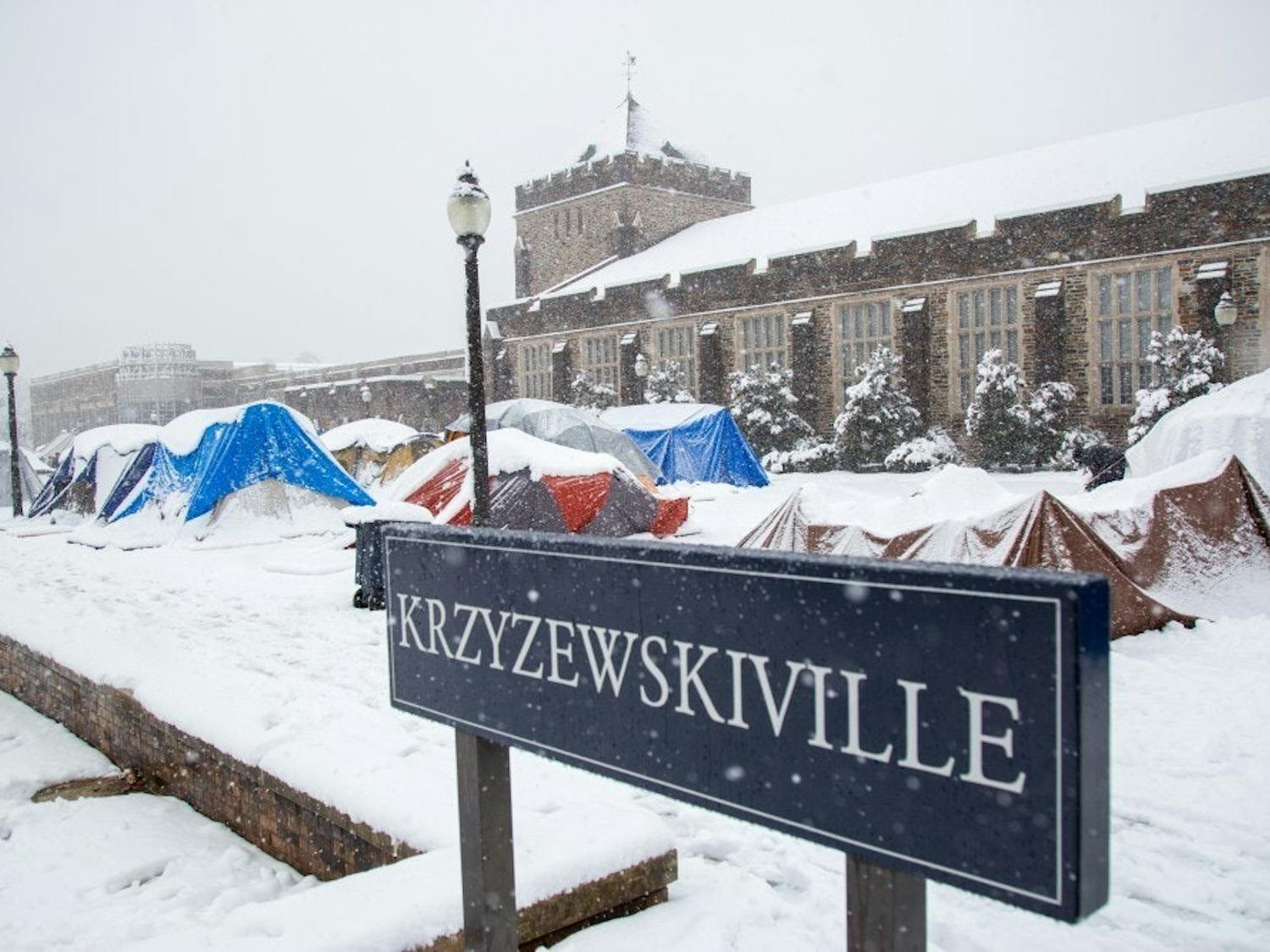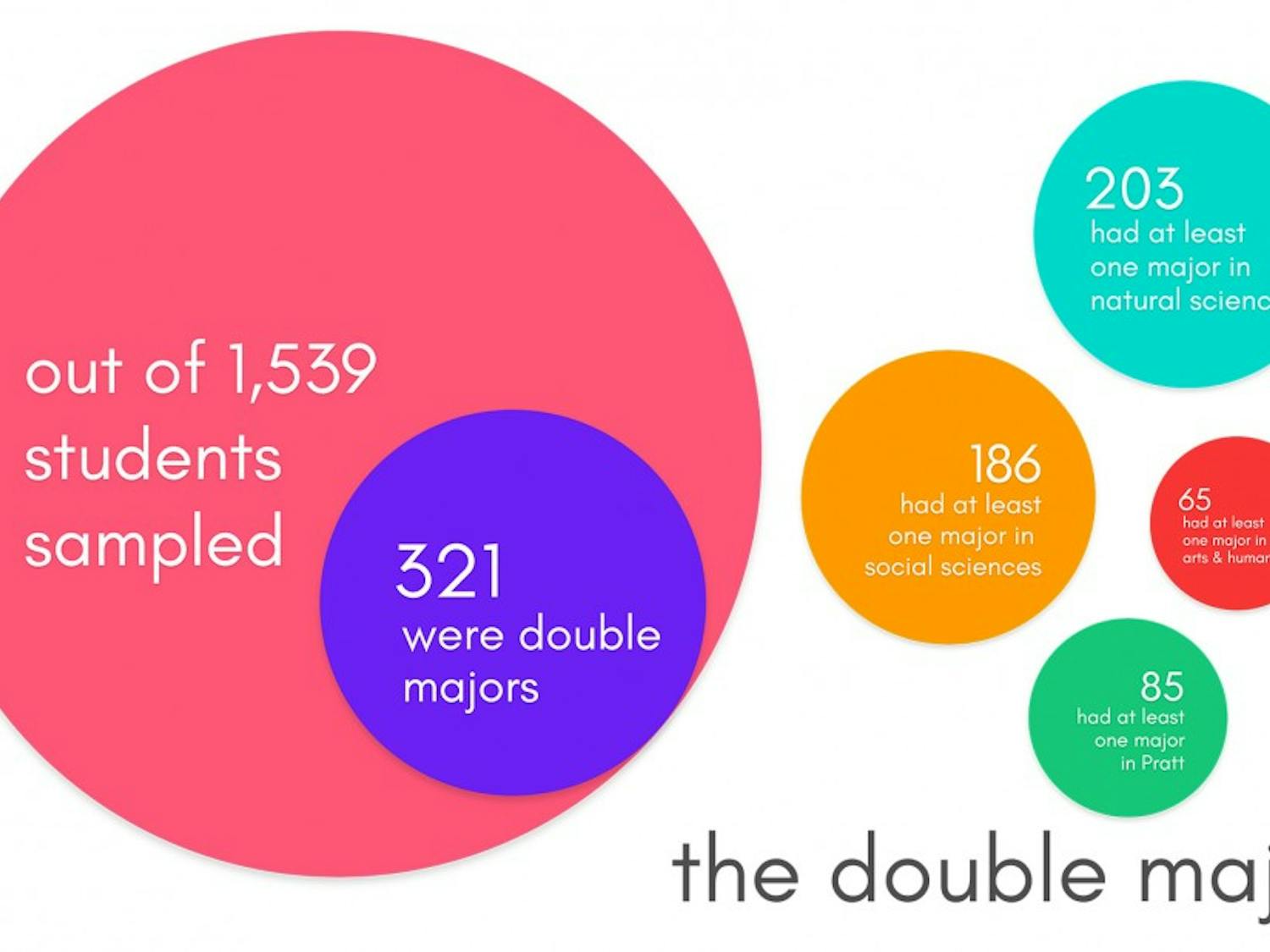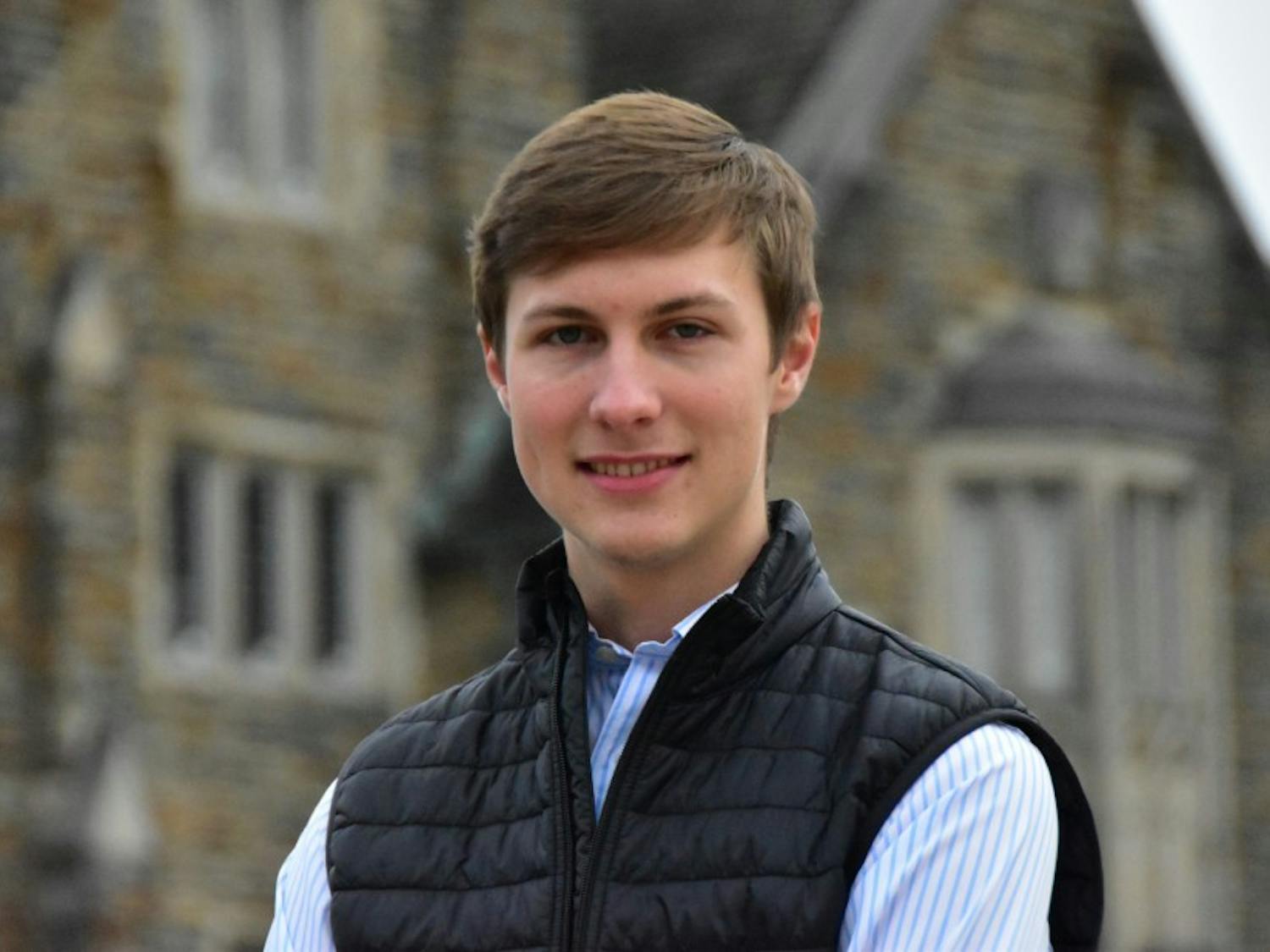At a school where students are always moving, art lets you slow down and be yourself.
“It’s a release. It’s a break from the Duke high-speed train. It’s a way of expression and a way of taking a break and being themselves and being comfortable,” said junior Keyin Lu, external executive vice president of duARTS.
Scott Lindroth, vice provost for the arts, has worked at Duke since 1990, and he described the arts as once being geographically and programmatically isolated. The faculty size was small at Duke, as was the number of supported programs.
Over the years, he has seen dramatic expansions in faculty size, courses and facilities. However, some artistic students remain unsatisfied with Duke’s level of commitment to developing an encouraging, supportive visual arts community.
'We need some well-roundedness'
Duke is known to prepare students for academic and professional careers, but not so much for the arts, several students said.
“We can’t just be a school that’s career driven. We need some well-roundedness,” said junior Della Tao, co-founder of sketchwalking group Draw Durham.
Former duARTS President Kelsey Graywill, Trinity ‘18, echoed this sentiment, emphasizing that the Trinity College of Arts and Sciences is a liberal arts college—with the word “arts” in the name—so students should expect to learn about the field.
“Having to present or create art even when you’re insecure about it being bad, that process is important because it forces Duke students to confront things they’re insecure about—things that they’re uncomfortable with—and overcome them,” Graywill said.
A lot of students ask Graywill how she has time for art. She tells them that you just have to make time. Many students come to Duke with a rich background in the arts, but they are now studying subjects like economics or engineering, she said.
“It’s really easy for students to come here and just let their background in the arts disappear,” Graywill said. “But if you can grasp onto a little bit of it, that’s enough.”
'Fundamental to my identity'
DuARTS is a student-run umbrella organization for arts groups on campus, and they host art workshops and activities open to all students. Lu said arts programming is unique at Duke because events are often free and well-attended.
Senior Aubrey Howard, president of duARTS, said her goal is to get people—no matter their previous experience—involved in art. Students who don’t think they’re good at art often don’t try, and she wants to break that barrier.
“The arts have a lot of meaning to student expression,” said junior Raahina Malik, internal executive vice president of duARTS. “[DuARTS] is making art fun, giving students a method to express themselves, communicate, move people, present ideas and draw connections to art. [It’s] having a way of expressing yourself and enjoying it at the same time.”
Malik is focused on showcasing minority representation in the arts on campus to strengthen and broaden arts culture. Art has a purpose, she noted, and it can be conveyed in different ways to different people.
“Having diverse representation of the arts strengthens our own duARTS’ commitment to the arts and creates broader campus dialogue about representation, about communication, about empathy, about narrative and story,” Malik said.
Junior Joyce Er, co-founder of Draw Durham, said visual art is particularly unique because it requires close attention to the artist’s surrounding environment.
“It’s fundamental to my identity and to a lot of students who come in here,” Er said. “It helps you understand yourself. Drawing makes you a better person, in a very literal way.”
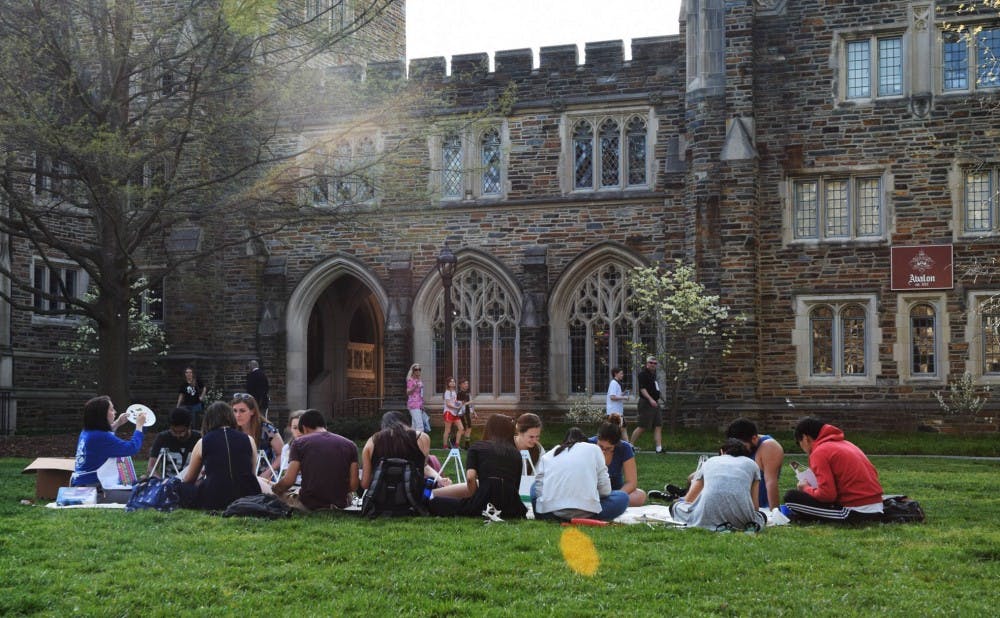
'Not enough respect'
Given the number of a capella groups, dance troupes and art groups on campus, Duke does have a number of students dedicated to the arts. However, Lu said Duke has a shortage of art supporters, including the University itself.
“From what I can gather, the arts community is underappreciated,” Lu said. “There isn’t enough visibility and not enough respect.”
Lu noted that visual and literary arts particularly lack visibility because they are not performance based, so painting, writing and poetry have less exposure.
However, Lindroth noted that the Nasher Museum of Art represents a conspicuous, vibrant visual arts culture on campus. He challenged the perception that visual arts are underappreciated given the prominence of the museum.
Lu also noted that STEM fields have an aura of respectability among students and that it’s almost glamorous to major in engineering. That sentiment is not the same around arts majors, she said.
Lindroth, however, claimed that funding for science does not decrease financial support for the arts. He explained that STEM labs can be much more expensive to fund than the arts, making them hard to compare.
“I do feel that the arts are getting adequate funding," Lindroth said. "All the departments are working hard to develop classes that attract students, and I feel that the participation in the arts department classes are pretty strong."
Although Lindroth is comfortable with arts funding, Howard feels that arts organizations face more difficulty getting funded on campus. Nevertheless, Graywill believes that opportunities are increasing, particularly from the Student Organization Finance Committee.
Barriers to entry
Although arts resources at Duke have improved, Graywill feels that the University is operating at the bare minimum right now. She described Duke as being in limbo between wanting to be an arts school but not actually attaining that goal.
Introductory art classes at Duke are often capped at fewer than 20 students, so not all beginner students can get involved due to the limited physical space and number of courses offered, Graywill said.
To compensate, Lindroth explained the arts department at Duke has tried to meet student demand by providing other avenues for arts involvement. DukeCreate, for example, offers free hands-on art workshops in areas like Photoshop and screenprinting.
The uncertainty of how to succeed professionally in the arts also causes some Duke students to veer away. Consulting firms and investment banks actively reach out to students through multiple networking events, which Lu noted is often not the case for the arts.
However, Lindroth said he has seen many faculty who have extended themselves to help their students beyond the classroom, and independent studies allow for direct mentoring.
“The arts are a difficult career choice, and you have to love what you do,” Lindroth said.
The only arts networking event on campus is Duke Entertainment, Media and Arts Network weekend, which brings together Duke students and alumni in media and art. The event last year was so packed that Lu said she barely had a chance to network.
“The problem at Duke is a microcosm of the society,” Er said. “The problem is that, as Duke students, we’ve grown to expect that paths to success are clear-cut, and I think especially as far as the arts, that’s not the case. We as Duke students need to embrace more uncertainty for resources to be capitalized upon.”
Building a community
Howard said she believes the arts community is important because it fosters a sense of collaboration, but having a broader visual arts community is difficult because of the nature of the work—most people make art in solitude.
When Er first came to Duke, she was looking for a way to grow as an artist. When she couldn’t find it, her art practice withered.
Er and Tao recently started Draw Durham—which holds biweekly sketchwalking sessions around Durham—as a way to build a visual arts community where people can critique work and give advice. They want Duke students to see that there are others like them who pursue visual art, giving them an incentive to keep practicing.
“There is this very social dimension to visual art, that it is possible to make art together and for it to become a social enterprise,” Er said.
Art is a platform that cuts across generational divides, Er added. At one of their sessions, they had undergraduates, graduate students, staff and professors all drawing together.
“I think it’s really important not just that we provide resources for people with those skills and with that background to keep practicing, but also that we make it possible for people who are completely uninitiated in the visual arts to actually enter it for the first time,” Er said.
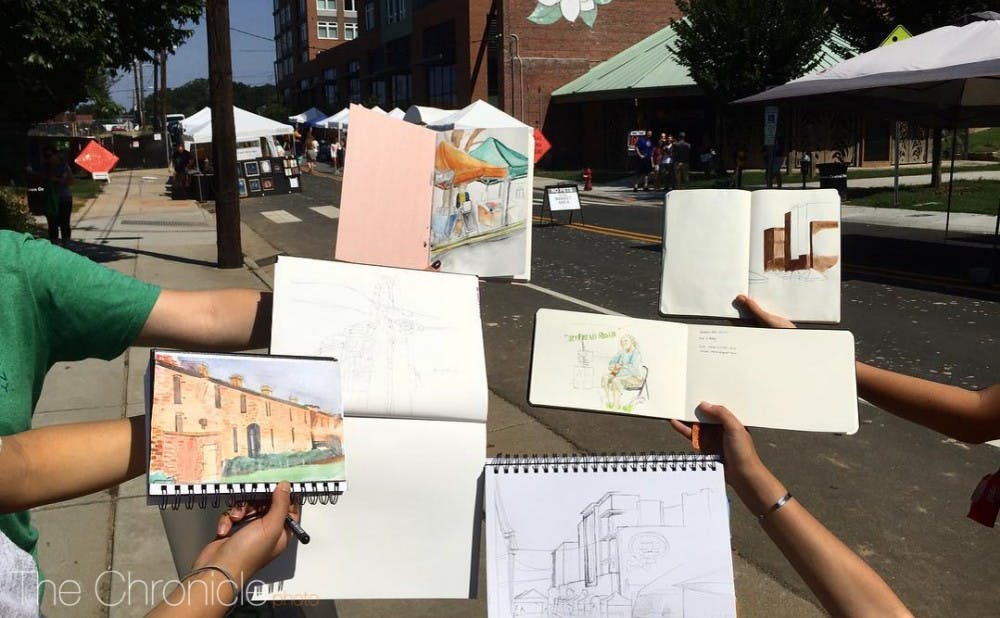
‘An upward trajectory’
In terms of arts funding, Duke is on “an upward trajectory,” Lu said, but in terms of arts resources and advising, she does not expect much improvement in the near future.
“I would like to see the arts grow more, but I don’t know how much Duke as an institution is willing to give,” Lu said.
She wants to see students who come to Duke with an interest in art be able to pursue it. Lu considered an arts major, but she believes the departments are not robust enough to rely on to start a successful career. If Duke had stronger arts programs, Lu believes it would incentivize students to keep pursuing them in a professional way instead of as an extracurricular.
Graywill added that dance, a capella and orchestral groups on campus often function in their own pockets of space, while visual artists are more dispersed throughout the community.
“If Duke really wants more students to study the arts and help bolster that community, it should offer incentives for incoming students,” Graywill said. “For students that are currently here, it’s important for the arts to talk to each other.”
One incentive that Er proposed was a studio space for artists where students can leave their paintings. If Duke wants to lower the barrier to entry to the arts, students should be able to claim a spot to come back and work on their art, she explained.
Duke currently offers programs like StudioDuke, which matches a student with an alumni mentor to work on a professional art project. For undergraduates, the Benenson Awards in the Arts offer funding for arts-centered projects.
However, Lu wants to see more structured peer mentor programs and a merit scholarship dedicated to the arts, which is a clear way to demonstrate to prospective students that Duke is committed to the discipline.
Lindroth also hopes Duke can get to a point where it can offer a merit scholarship, but he noted that Duke has many priorities, and ensuring financial aid is available to all prospective students is an important one.
Duke currently offers a Master of Fine Arts program in dance, an MFA in experimental and documentary arts and a doctoral program in composition and musicology.
“I’m very excited about the increasing quality of the arts departments, the kind of classes that we’re offering, and the faculty that we’re bringing on board, as well as the work that our students are doing,” Lindroth said.
Graywill is hoping incoming classes of students feel less resistance and raised eyebrows for making art than she did.
“Duke does a really good job making good students,” Graywill said. “And arts makes them good people.”

